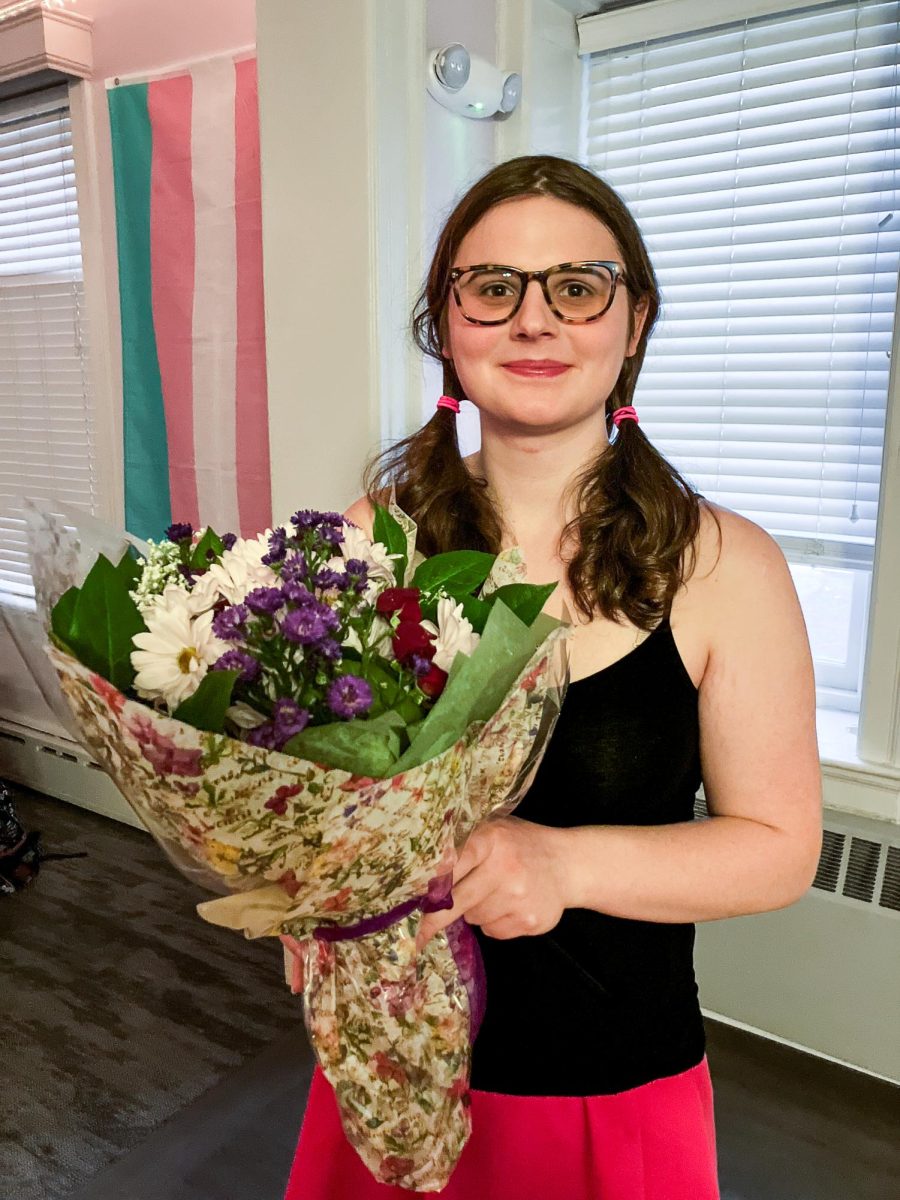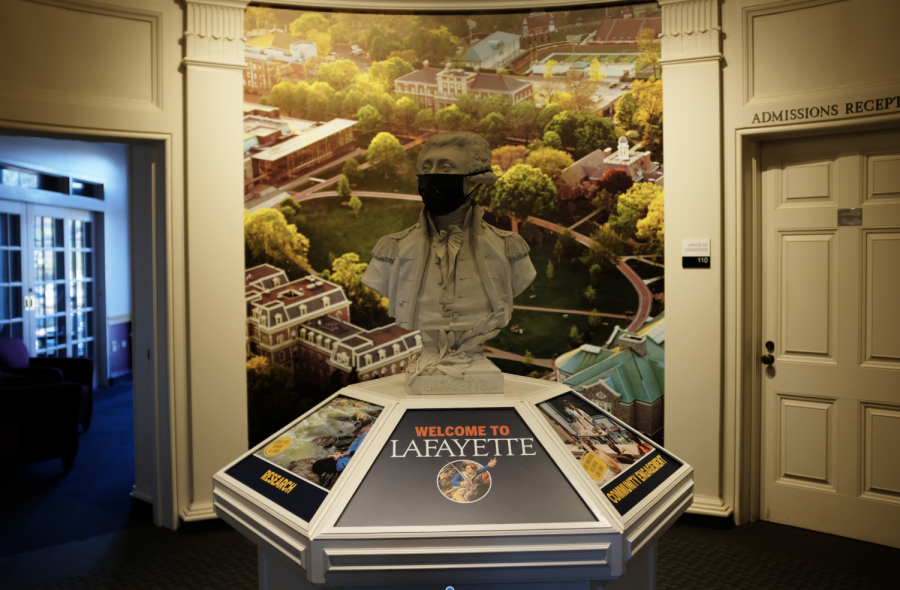Lafayette to improve access to lower- and middle-class students with updates to financial aid and CSS policies
Lafayette is the first college out of the current CSS profile users to use free and reduced lunch data as a guide to understand family income or prospective students. (Photo by Deanna Hanchuk ’22)
October 29, 2021
On Thursday, Lafayette announced two immediate changes to its financial aid policy to make Lafayette more accessible to students from low- and middle-income backgrounds. These changes will go into effect for all future Lafayette students, beginning with this year’s applicants.
Those who attend a high school at which 75% or more of students qualify for free or reduced lunch will no longer need to complete the college Scholarship Profile (CSS) when applying for financial aid at Lafayette.
The second alteration is within Lafayette’s financial aid policy. Applicants from families with incomes of up to $150,000 will now have their financial needs met through grants and work-study, without any loans. The income bracket was previously $50,000.
“If we’re going to do community well, that starts the minute that a student inquires about being part of our Lafayette family,” President Nicole Hurd said. “I think from that first touch we should be thinking about how we lift each other up and how we make things inclusive and that profile–especially for our low-income students–does not feel like a community engaging process.”
The CSS, which supplements FAFSA, provides the financial aid office with key information about a family’s ability to finance a college education. However, it often is a barrier to lower-income students applying for financial aid because the form is complex and includes questions that generally don’t apply to this group.
“The issue is just the number of questions that are asked that really don’t need to be answered by students who are in poverty. It just makes no difference in the end result of their ability to pay,” Assistant Vice President for Financial Aid Forrest Stuart said.
Lafayette is the first college from CSS profile users to implement free and reduced lunch data as a guide to understand the family income of prospective students. Moreover, the decision to waive the CSS profile for a whole population of students is unprecedented among colleges, according to Stuart.
“We were a true national leader with this program,” Stuart said.
“If [CSS] is not going to make a difference [for high need students], then let’s remove that additional step we have to take, because it’s just a waste of time,” Stuart said.
In situations where students do not attend a school that hit the 75% reduced lunch marker required for Lafayette to automatically waive the CSS requirement but individually qualify for free or reduced lunch, the requirement for the CSS will also be waived. However, these students will have to self-identify themselves as such and inform the college.
“It’s not okay to ask our low-income families to keep proving over and over and over again that they’re low income. It’s actually, I think, incredibly demeaning and demoralizing to have to keep proving that you’re low income when we’ve already known that you’re low income off your FAFSA form,” Hurd said.
“I would actually argue that it’s not the way to enter the community. Frankly, I think it leads to more students feeling like they don’t belong from the get-go that there’s some sense of imposter syndrome or lack of trust, because this verification process is so tedious when it doesn’t have to be that way,” she added.
As a result of this change, both Stuart and Hurd anticipate an increase in the number of applicants to the college. However, he explained that the goal of the program is not to increase the student body, but rather to create a larger, more diverse pool of students who can attend Lafayette.
“It’s to give us a bigger pool of socio-economic ranges and diversity so that we, in the admission process, can craft a class that brings the extra dimension to your experience as a student and to the entire campus,” Stuart said.
In addition to the amendments to the CSS profile, with the change in the financial aid policy reevaluating when families are given loans, the college hopes to address the financial “squeeze” faced by those making a middle income by raising the threshold from its previous limit of $50,000, according to Stuart.
“[The middle-class families] don’t qualify for Pell Grant, which is the federal grant for the neediest, but they also can’t afford to pay everything. So, this is an effort to try to mitigate that to some degree,” Stuart explained.
While students will still have the opportunity to take out loans, “the policy just helps with that sort of that burden to some degree,” Stuart said.
With these changes, Lafayette joins a select group of colleges and paves new ground when it comes to financial aid policy. Though many colleges are taking action to address the pressure faced by the middle-income group, besides Colgate University, Lafayette College is the only other higher-education in the nation to place the upper threshold for no-loan payments at $150,000.
“I’m just very excited about the fact that there’s been so much excitement and, and willingness to, again increase our ability to offer a Lafayette education and the opportunity that brings to our students,” Hurd said.
While first proposed by Stuart under a previous administration, it was only after Hurd became Lafayette’s 18th president that this policy gained traction. Stuart attributes this to Hurd’s commitment to helping lower-income students, as illustrated during her prior role as President of the College Advising Corp, a group that “works to increase the number of low-income, first-generation college and underrepresented high school students who enter and complete higher education,” according to its website.
“This is a natural thing for her. She made a huge impact with the College Advising Corps. Now, she’s bringing that to Lafayette, where we can have a leadership role,” Stuart said.
Since Hurd began her tenure as president this past July, she has wanted to work on making Lafayette more inclusive, explaining that she is happy that this is her first major change to Lafayette.
“I’ve kind of been looking at admissions and reforming it from outside, now as a college president, now as a part of the Lafayette community, I get to work with our team to kind of reform from the inside. Now I have the colleagues and the team to actually implement a change,” Hurd said. “And what I’m hoping is change doesn’t just help the Lafayette community—I hope other liberal arts colleges and other selective schools that use the CSS profile follow our lead.”
While this is a definitive first step, Hurd explained that she plans to keep working to make Lafayette increasingly inclusive and accessible to all students.
“This is something we have to continue to look at. These are exciting initiatives; I think they’re game-changing initiatives. But there are other initiatives to come,” Hurd said. “There are all sorts of pipelines of talent that we need to keep developing…There are all sorts of other initiatives that we can develop and implement in the months and years ahead, but very feel very good about this being our first one during my presidency.”



























































































































